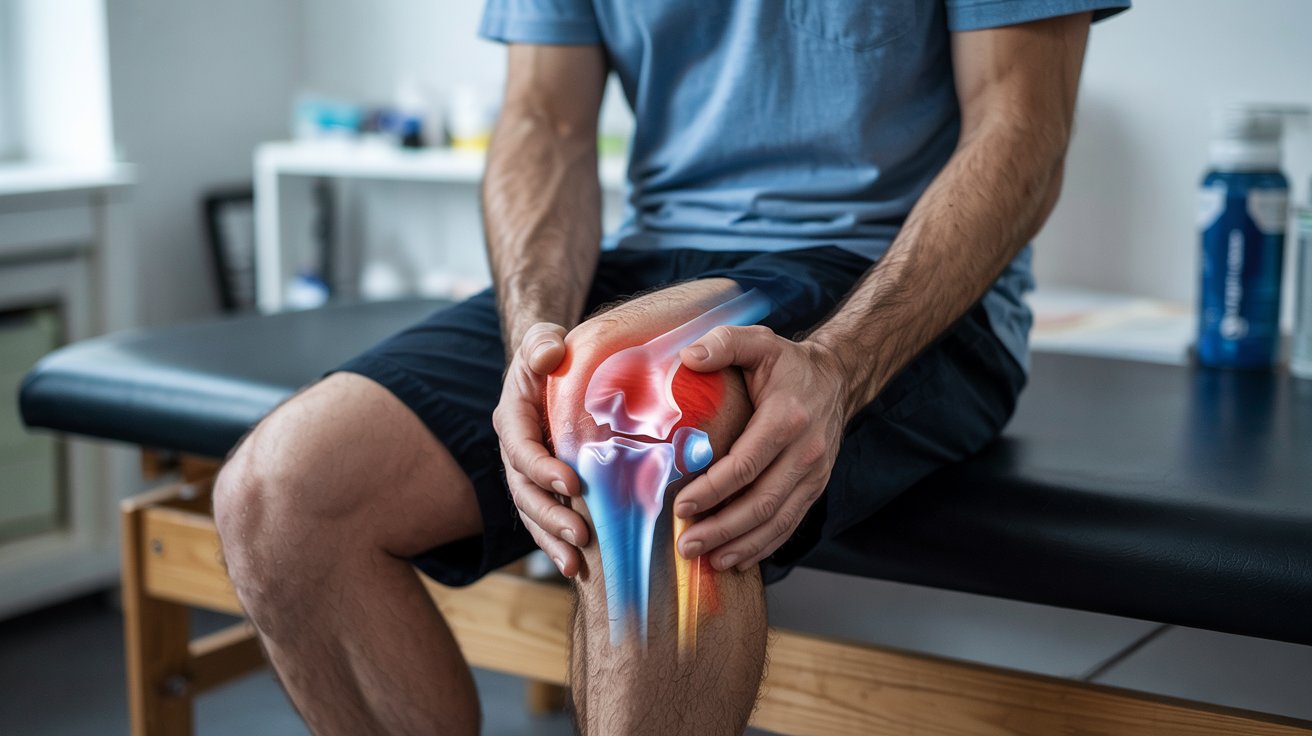Is a Recumbent Bike Good for Arthritic Knees?

Yes, a recumbent bike is a low-impact, joint-friendly form of exercise that reduces pressure on the knees while helping you stay active, strengthen muscles, and improve joint mobility. Compared to traditional upright bikes, recumbent bikes feature a supportive backrest, pedals positioned in front of the body, and greater overall stability, making them especially suitable for individuals with limited balance or those in recovery.
The Study "Stationary cycling exercise for knee osteoarthritis: A systematic review and meta-analysis" [1] have shown that regular use of a recumbent bike can help:
- Reduce knee joint pain
- Stimulate synovial fluid production for joint lubrication
- Improve knee flexibility and range of motion
- Strengthen the muscles that support the knee
- Support weight management, reducing strain on the joints
What Is the Best Exercise for Arthritis in the Knee?
The best exercises for knee arthritis are typically low-impact and controlled, which include:
- Cycling (especially on a recumbent bike)
- Swimming or water-based exercises
- Light resistance training
- Gentle walking (preferably on flat surfaces)
- Yoga and stretching routines
These exercises help you strengthen the muscles around your knees, improve joint mobility, and boost circulation without exacerbating your condition. A recumbent bike is often considered a top choice because it offers nearly all of these benefits with minimal risk.
Is Cycling Better Than Walking for Knee Arthritis?
For individuals with knee arthritis, cycling (especially using a recumbent bike) is often more joint-friendly than walking.
While walking is simple and accessible, it can place stress on the knee joints—particularly for those with severe joint degeneration or excess body weight. Cycling, on the other hand, shifts much of the body’s weight onto the seat, which significantly reduces the impact on the knees, making discomfort more manageable.
In addition, cycling involves smooth, continuous circular motion, which is more beneficial than walking in terms of:
- Lubricating the joints
- Reducing stiffness
- Enhancing circulation
That said, if you enjoy walking, you can certainly combine both activities. However, during flare-ups, swelling, or increased joint pain, cycling is often the safer choice.
What Exercise Machine Is Best for Arthritic Knees?
For individuals with knee inflammation or chronic pain, the ideal exercise equipment should have the following features:
- Low impact
- Adjustable resistance
- Natural, low-strain posture
- Easy control of pace and intensity
Here are some exercise machines that are well-suited for people with knee arthritis:
| Equipment Type | Suitability | Description |
|---|---|---|
| Recumbent Bike | ★★★★★ | Excellent support, low knee stress, relaxed posture, suitable for individuals with arthritis. |
| Upright Bike | ★★★☆☆ | Effective for muscle training, slightly more knee load, suitable for those without knee & back issues |
| Elliptical Trainer | ★★★☆☆ | Simulates walking with no impact, requires good balance |
| Rowing Machine | ★★☆☆☆ | Full-body workout, may be harder for beginners to control |
| Treadmill (Walking Mode) | ★☆☆☆☆ | Acceptable for flat walking, not recommended during pain flare-ups |
Which Bike Is Best for Arthritic Knees?
Recumbent bikes are considered the best option for people with arthritis because they provide maximum comfort, back support, and a low-impact pedaling motion that reduces stress on the knees. The reclined position also promotes better weight distribution, making it easier for individuals with limited mobility, balance issues, or chronic knee pain to exercise safely.
Below is a comparison of three common types of exercise bikes:
✅ Recumbent Bike
- Best option: reclined backrest and forward-positioned pedals
- Offers strong support, high stability, suitable for those with limited strength or mobility
- Great for individuals with back pain, higher body weight, or balance issues
Related Article: Best Recumbent Bike for Seniors with Arthritis
⚠️Upright Bike
- Only suitable for those with stable knees and no back issues
- Mimics a traditional outdoor bike with more muscle engagement
- Smaller seat and forward-leaning position may be less comfortable for some
⚠️ Spin Bike
- Common in gyms for high-intensity training
- Excellent for muscle building
- Not recommended for severe arthritis due to aggressive posture and high resistance
If you're considering buying a recumbent bike for rehabilitation, the Vanswe RB407 is an excellent option for people with arthritis.
- It includes 16 levels of magnetic resistance, with the first level being especially light, allowing you to start gently and increase intensity as your strength improves.
- The step-through design makes it easy to get on and off, and the LED monitor tracks time, distance, speed, and heart rate for a well-rounded recovery experience.
Final Tips
- Start with 5–10 minutes at low resistance and gradually build up
- Keep a slight bend in the knees to avoid overextension
- Always stretch and cool down after your session
- Stop immediately if you experience pain and consult a doctor
- Consistency matters more than intensity
If you're ready to make a change for your knees, a recumbent bike might be the gentle yet powerful partner you need on your path to recovery.
Refference
- Luan L, Bousie J, Pranata A, Adams R, Han J. Stationary cycling exercise for knee osteoarthritis: A systematic review and meta-analysis. Clin Rehabil. 2021 Apr;35(4):522-533. doi: 10.1177/0269215520971795. Epub 2020 Nov 10. PMID: 33167714.

Written by Vanswe Fitness
Last updated: 2025-04-07

Reviewed by Thatcher Brolin, NASM-CES, ACE Health Coach
Thatcher Brolin is a certified corrective exercise specialist and health coach with a deep focus on mobility, injury prevention, and sustainable fitness for middle-aged and older adults. He holds both a B.S. in Exercise Science, bringing an advanced understanding of human movement and rehabilitation into every client interaction.
As a Senior Fitness Specialist, Thatcher designs evidence-based programs that support joint health, rehabilitation, strength and aerobic exercise. He has helped hundreds of clients regain strength, stability, and confidence.
With a clinical background and a commitment to accessible movement, Thatcher believes that fitness should meet you where you are—and grow with you from there.
